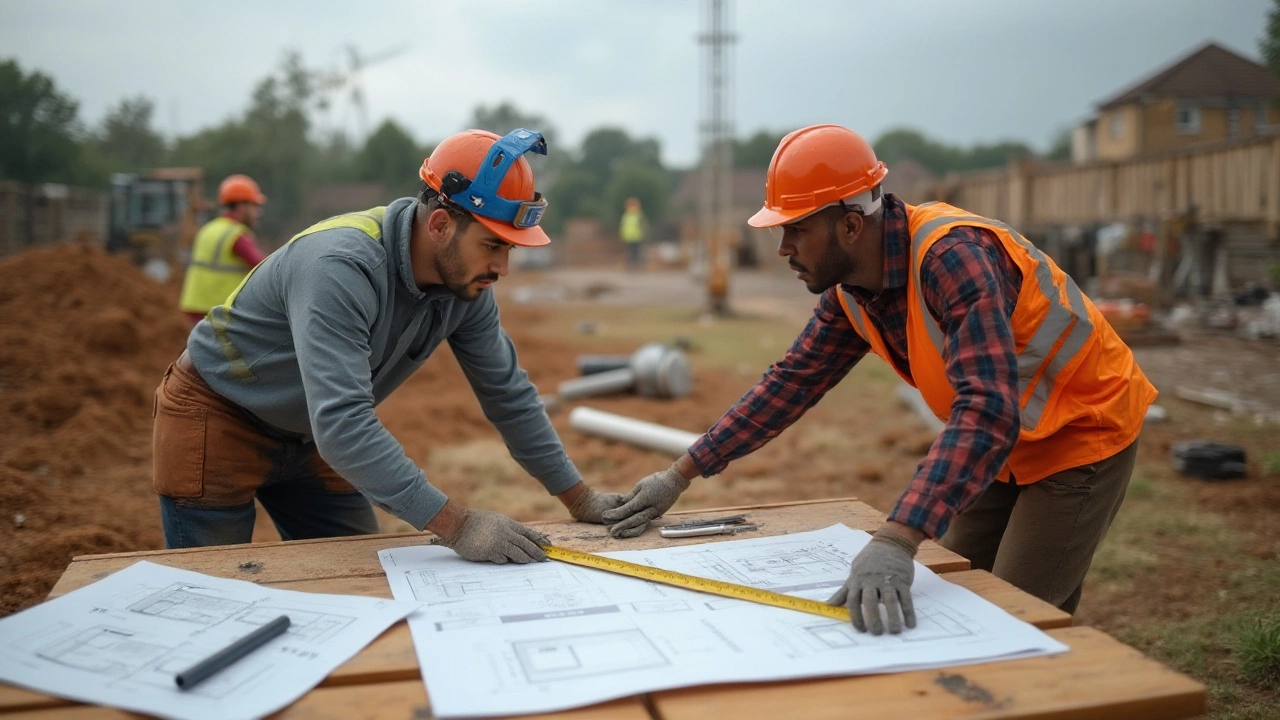Construction Accuracy: Why It Matters and How to Nail It
Ever wondered why a garage door fits perfectly in one home but not in another? The secret is construction accuracy. Getting measurements, levels, and tolerances right from day one saves time, money, and headaches. In this guide we’ll break down the basics, share the tools you need, and give you bite‑size tips you can apply on any project – from a new roof to a loft conversion.
Core Principles of Accurate Building
First off, think of accuracy as a habit, not a one‑off task. It starts with a solid plan: clear drawings, precise specs, and a realistic schedule. When the blueprint is spot‑on, everyone from the architect to the tradesperson is speaking the same language.
Second, measure twice, cut once – but also verify before you install. A small error in a wall stud layout can throw off a door frame, a window, or a TV wall mount later on. Use a reliable tape, laser level, or digital measuring wheel and double‑check critical points.
Third, document everything. Jot down as‑built measurements, note any site variations, and keep a photo log. This habit makes it easy to spot deviations early and fix them before they become costly re‑works.
Everyday Tools That Boost Accuracy
Here are the tools most pros swear by:
- Laser Level: Perfect for checking floor flatness, ceiling heights, and wall plumb. A rotating laser saves you dozens of manual checks.
- Digital Angle Finder: Helps you set roof pitches, stair stringers, and loft conversion angles with one‑digit precision.
- Laser Distance Meter: Measures long spans in seconds – ideal for planning garage door openings or positioning a new TV mount in a fresh build.
- Calibrated Tape Measure: Old school, but still the most trusted for short distances and fine adjustments.
- Smartphone Apps: Apps like Bubble Level, Measure, or construction‑specific kits turn your phone into a quick reference for level, plumb, or square checks.
Investing in a few quality tools pays off quickly. The right laser can cut your layout time in half and catch errors you’d otherwise miss.
Now, let’s look at a few real‑world scenarios that show why accuracy is a game‑changer.
Real‑World Examples From the Field
Roofing projects often stumble over pitch mismatches. Using a digital angle finder while you install roofing trusses ensures every panel sits flush, preventing water leaks later on. A recent post on cheap roofing highlighted how a simple angle check saved a homeowner $500 in re‑roofing costs.
Foundation repairs are another hot spot. A horizontal crack in a wall can indicate a shift of just a few millimetres – enough to weaken the whole structure. Measuring the crack width with a calibrated gauge and tracking it over time lets you decide whether a DIY patch will do or if you need a professional underpinning.
Even something as straightforward as installing a garage door relies on precise jamb dimensions. A mis‑aligned track can chew up the motor and void warranties. Follow the construction accuracy checklist: level the floor, square the side walls, and verify the opening height with a laser distance meter before you even touch the door.
Bottom line: accuracy isn’t a luxury, it’s a cost‑control tool. When you get the basics right – solid plans, reliable tools, and diligent documentation – you’ll see fewer surprises, smoother installs, and happier clients.
Ready to boost your next project? Grab a laser level, double‑check those measurements, and keep a running log of any changes. Your future self (and your wallet) will thank you.

Mastering the 3-4-5 Method for Accurate Building Construction
Dec 16, 2024, Posted by Damon Blackwood
The 3-4-5 method, rooted in basic geometry, is a practical approach used in construction to ensure structures have perfect right angles. This technique helps builders create perpendicular lines and rectangles with precision, critical for maintaining the integrity of a project. With the application of simple measurements in a ratio of 3:4:5, this method is both time-saving and reliable, providing an essential tool for professionals in the commercial construction industry. Understanding its application can significantly enhance the accuracy and efficiency of construction projects.
MORESEARCH HERE
Categories
TAGS
- foundation repair
- commercial construction
- construction
- new builds
- home improvement
- home renovation
- bathroom renovation
- residential construction
- construction materials
- home foundation
- renovation tips
- building types
- contractor
- foundation cracks
- home construction
- architectural services
- building codes
- construction differences
- home inspection
- kitchen installation